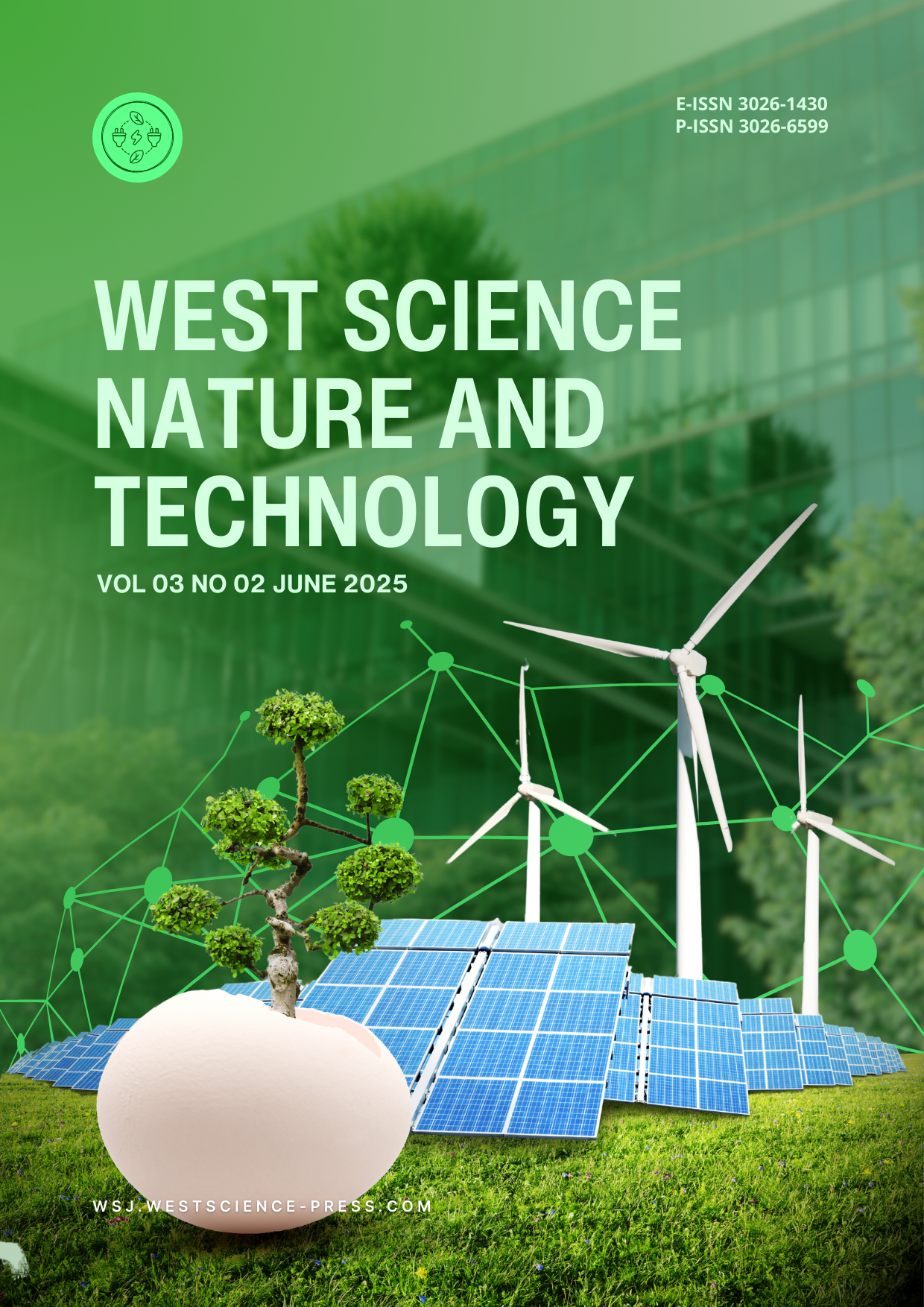In Silico Design of Multiplex PCR Primers for the Detection of Foodborne Pathogens in Fermented Shrimp Paste (Terasi) from Lombok Island: In Silico PCR and Primer Verification
DOI:
https://doi.org/10.58812/wsnt.v3i02.1813Keywords:
In Silico PCR , Multiplex PCR, Foodborne Pathogen Detection, Shrimp Paste, Primer DesignAbstract
Fermented shrimp paste (terasi) is a traditional food product produced by micro, small, and medium enterprises (MSMEs) in Lombok Island, Indonesia. Due to its fermentation and handling processes, terasi is susceptible to contamination by foodborne pathogens. The Indonesian Food and Drug Authority has identified specific bacterial pathogens that pose a risk of contamination in shrimp paste, necessitating accurate and efficient detection methods. Molecular detection using polymerase chain reaction (PCR) is known for its high specificity and sensitivity, as well as its rapid processing time and cost-effectiveness. However, conventional PCR can only detect a single target pathogen in one reaction, limiting its efficiency in screening multiple contaminants simultaneously. This study aims to design and optimize Multiplex PCR primers for detecting multiple foodborne pathogens in terasi through an in-silico approach, followed by In Silico PCR verification to assess primer specificity and efficiency. Target pathogens include Salmonella spp., Staphylococcus aureus and Vibrio cholerae. DNA target sequences were retrieved from the National Center for Biotechnology Information (NCBI) database, and primer design was conducted using Primer3Plus software. The designed primer sets were validated using Primer-BLAST (NCBI), and in-silico PCR was performed to verify amplification efficiency and specificity. The designed primer set has been successfully obtained and evaluated using In Silico PCR and Primer-BLAST (NCBI), confirming its specificity to the target genes. These results demonstrate that the primers can be effectively used as a molecular detection tool for foodborne pathogens. The optimized conditions and validated primer set are expected to contribute to molecular-based food safety detection methods, particularly for Indonesian fermented food products.
References
S. M. Pires et al., “Burden of foodborne diseases: think global, act local,” Jun. 01, 2021, Elsevier Ltd. doi: 10.1016/j.cofs.2021.01.006.
F. F. Perdhana et al., “Detection of Pathogenic Bacteria in Shrimp Paste through an Enrichment Stage Using Nutrient Broth Medium,” 2023, pp. 388–394. doi: 10.2991/978-94-6463-274-3_36.
T. R. J Coker et al., “Health in Southeast Asia 3 Emerging infectious diseases in southeast Asia: regional challenges to control,” The Lancet, vol. 377, pp. 599–609, 2011, doi: 10.1016/S0140.
B. Priyanka, R. K. Patil, and S. Dwarakanath, “A review on detection methods used for foodborne pathogens,” Sep. 01, 2016, Indian Council of Medical Research. doi: 10.4103/0971-5916.198677.
S. Barinda and D. Ayuningtyas, “Assessing the food control system in Indonesia: A conceptual framework,” Food Control, vol. 134, Apr. 2022, doi: 10.1016/j.foodcont.2021.108687.
M. Aladhadh, “A Review of Modern Methods for the Detection of Foodborne Pathogens,” May 01, 2023, MDPI. doi: 10.3390/microorganisms11051111.
L. Wang, K. Jia, X. Qu, Y. Li, and J. Lin, “Progress in separation and detection of foodborne bacteria for food safety,” Apr. 01, 2025, Elsevier Ltd. doi: 10.1016/j.cofs.2024.101266.
J. W. F. Law, N. S. A. Mutalib, K. G. Chan, and L. H. Lee, “Rapid metho ds for the detection of foodborne bacterial pathogens: Principles, applications, advantages and limitations,” Front Microbiol, vol. 5, no. DEC, 2014, doi: 10.3389/fmicb.2014.00770.
R. Kalendar, “A Guide to Using FASTPCR Software for PCR, In Silico PCR, and Oligonucleotide Analysis,” in Methods in Molecular Biology, vol. 2392, Humana Press Inc., 2022, pp. 223–243. doi: 10.1007/978-1-0716-1799-1_16.
R. Kalendar, A. Shevtsov, Z. Otarbay, and A. Ismailova, “In silico PCR analysis: a comprehensive bioinformatics tool for enhancing nucleic acid amplification assays,” Frontiers in Bioinformatics, vol. 4, 2024, doi: 10.3389/fbinf.2024.1464197.
K. Kayama et al., “Prediction of PCR amplification from primer and template sequences using recurrent neural network,” Sci Rep, vol. 11, no. 1, Dec. 2021, doi: 10.1038/s41598-021-86357-1.
M. Kovárová and P. Dráber, “New specificity and yield enhancer of polymerase chain reactions,” 2000.
S. Kawasaki, N. Horikoshi, Y. Okada, K. Takeshita, T. Sameshima, and S. Kawamoto, “Multiplex PCR for Simultaneous Detection of Salmonella spp., Listeria monocytogenes, and Escherichia coli O157:H7 in Meat Samples,” 2005.
Y. Huo et al., “Risk-based detection as a cost-effective strategy to reduce foodborne illness due to salmonella,” Heliyon, vol. 9, no. 11, Nov. 2023, doi: 10.1016/j.heliyon.2023.e22392.
F. J. Cousin, R. Le Guellec, V. Chuat, M. Dalmasso, J. M. Laplace, and M. Cretenet, “Multiplex PCR for rapid identification of major lactic acid bacteria genera in cider and other fermented foods,” Int J Food Microbiol, vol. 291, pp. 17–24, Feb. 2019, doi: 10.1016/j.ijfoodmicro.2018.11.004.
E. B. H. Ahmed et al., “Development of Multiplex-PCR Method to Detect Three Bacterial Species in Food and their Use in Food Inspection,” J Pure Appl Microbiol, vol. 16, no. 2, pp. 1350–1361, Jun. 2022, doi: 10.22207/JPAM.16.2.63.
N. Ngamwongsatit, S. Chaturongakul, and R. Aunpad, “Development and Validation of an Efficient Multiplex PCR Assay for Simultaneous Detection of Six Common Foodborne Pathogens and Hygiene Indicators,” Foodborne Pathog Dis, vol. 20, no. 6, pp. 222–229, Jun. 2023, doi: 10.1089/fpd.2022.0062.
Y. Nishikawa et al., “Validation of the application of gel beads-based single-cell genome sequencing platform to soil and seawater,” ISME Communications, vol. 2, no. 1, Dec. 2022, doi: 10.1038/s43705-022-00179-4.
R. Oliveira, E. Pinho, G. Almeida, N. F. Azevedo, and C. Almeida, “Prevalence and Diversity of Staphylococcus aureus and Staphylococcal Enterotoxins in Raw Milk From Northern Portugal,” Front Microbiol, vol. 13, Mar. 2022, doi: 10.3389/fmicb.2022.846653.
L. Unsunnidhal, J. Ishak, and A. Kusumawati, “Expression of gag-CA Gene of Jembrana Disease Virus with Cationic Liposomes and Chitosan Nanoparticle Delivery Systems as DNA Vaccine Candidates,” Trop Life Sci Res, vol. 30, no. 3, pp. 15–36, 2019, doi: https://doi.org/10.21315/tlsr2019.30.3.2.
D. Cahyani, L. Unsunnidhal, T. Untari, and A. Kusumawati, “Hepatitis B virus HBcAg gene transformtion in Escherichia coli DH5α using pEGFP-N1,” AIP Conf Proc, vol. 3068, no. 1, 2024, doi: 10.1063/5.0202017.
Mashur, D. Oktaviana, Kholik, and L. Unsunnidhal, “Implementation of Health Management of a Beef Catle Feed and the Collective Cage Based Smallholder Farming in Lombok Island,” in Proceedings of The 2nd International Conference on Bioscience, Biotechnology and Biometrics, Lombok: AIP Publishing, 2019, pp. 1–5. doi: 10.1063/1.5141305.
U. Barokah, L. Unsunnidhal, Y. P. Kristianingrum, and A. Kusumawati, “Transformation of HBcAg gene of hepatitis B virus using pEGFP-C1 vector,” in THE 5TH INTERNATIONAL CONFERENCE ON BIOSCIENCE AND BIOTECHNOLOGY, Mataram: AIP Publishing, 2023. doi: https://doi.org/10.1063/12.0020985.
F. Fihiruddin, N. Inayati, R. Jannah, L. Unsunnidhal, and A. Kusumawati, “Expression and epitope prediction of MPT64 recombinant proteins from clinical isolates of Mycobacterium tuberculosis as immunoserodiagnostic candidates,” Vet World, vol. 15, no. 2, pp. 2376–2383, 2022, doi: www.doi.org/10.14202/vetworld.2022.2376-2383.
M. P. Kabiraz, P. R. Majumdar, M. M. C. Mahmud, S. Bhowmik, and A. Ali, “Conventional and advanced detection techniques of foodborne pathogens: A comprehensive review,” Heliyon, vol. 9, no. 4, Apr. 2023, doi: 10.1016/j.heliyon.2023.e15482.
I. Z. Waziri, M. I. Usman, and Z. A. Dandalma, “PyPCRtool: A python package for in silico PCR and primer verification,” Dutse Journal of Pure and Applied Sciences, vol. 10, no. 3a, pp. 271–277, Oct. 2024, doi: 10.4314/dujopas.v10i3a.25.
L. Perez-Bou et al., “Design and Validation of Primer Sets for the Detection and Quantification of Antibiotic Resistance Genes in Environmental Samples by Quantitative PCR,” Microb Ecol, vol. 87, no. 1, Dec. 2024, doi: 10.1007/s00248-024-02385-0.
Downloads
Published
Issue
Section
License
Copyright (c) 2025 Lalu Unsunnidhal, Firman Fajar Perdhana, Mutia Devi Ariyana

This work is licensed under a Creative Commons Attribution-ShareAlike 4.0 International License.






















 Instagram
Instagram 